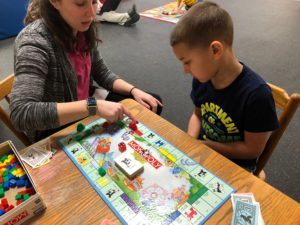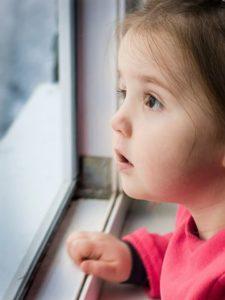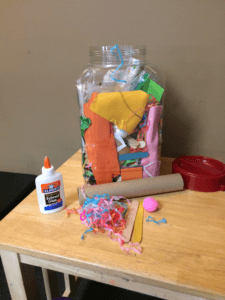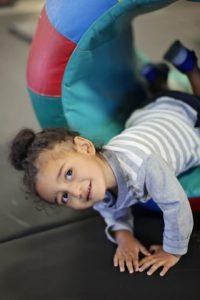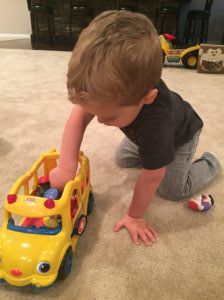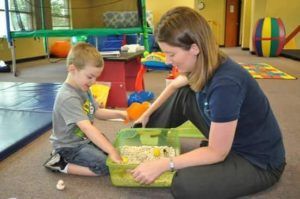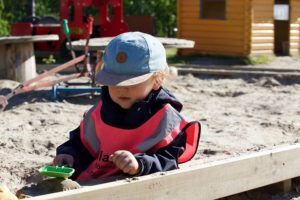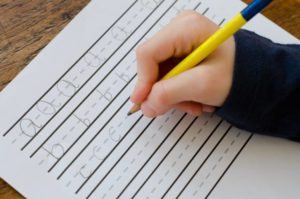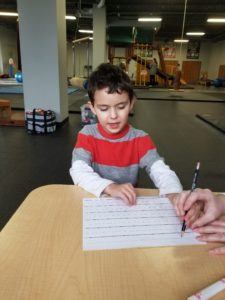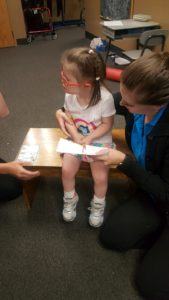Fine Motor
THERAPY IS PLAY!
Occupational therapy from a parent’s perspective: Why is the therapist playing with my child, and why am I paying for someone to play with my child when I could do this at home?
Occupational therapy from an OT’s perspective: How can I make this fun and purposeful, while giving this child a challenge?
OT’s have a method to their madness, a purpose to their play, an underlying skill to work on with every move. We just disguise therapy with play…because let’s face it…if a child thinks they are “working” they won’t be as motivated to participate!
Play is a child’s number one occupation; it is intrinsically motivating and FUN! What children don’t know? It is also a learning experience. Children are like sponges; as they interact with objects, their environment, and the people around them, they are soaking up all of the wonderful skills needed for future occupations such as being a student, completing chores, and playing with friends!
So…what’s the difference between play at home and play at therapy?
As occupational therapists introduce toys and play into their sessions, we are continuously looking for the just right challenge for your child. This means we are allowing them to learn new skills with our support, but without overwhelming them in the process. As we assess their skill level during play, we are also able to provide modifications to the activity and are able to grade the level of difficulty up or down based on your child’s specific ability.
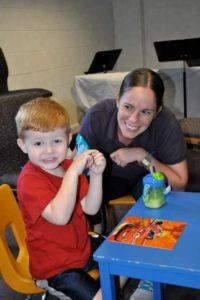
Examples of this could be: sitting on a therapy ball while playing a game to activate postural muscles, coloring on a vertical surface to improve shoulder stability, or using tongs to pick up game pieces rather than their hands for fine motor control and strengthening.
Each toy and activity used during therapy is specifically chosen to cater to the individual needs and abilities of your child. When choosing a toy or activity, some of the things occupational therapists consider are:
-What does their grasp or release on objects look like?
-How is their postural control and shoulder stability?
-Are their movements intentional and fluid, and are they able to move their arms and legs both individually and simultaneously?
-How are they manipulating, exploring, and interacting with the toys? Is their play purposeful and functional?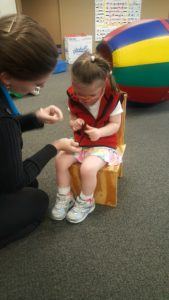
-Are they aware of their environment and the others around them?
-Are they able to follow multi-step directions?
This is just a glimpse into what play looks like from an OT perspective. That’s why we allow the last few minutes of our sessions for Q&A with you, the parents! We are a team, and we want you to understand the goals for your child, and the path to master those goals. The home exercise programs created for you and your child are imperative to seeing the most success. We encourage you to ask questions when you are uncertain about anything!
Read MoreIs your child becoming bored on snowy or rainy days? These are great days to spark creativity and imagination! By allowing your child the ability to be creative without specific instructions or a model promotes independence and problem-solving skills. One way to promote creativity is through “free art”, which allows the child to create anything they desire without “rules” (except for safety, of course!). The amazing thing about free art is anything can be used to create amazing pictures, cars, buildings, etc.
The following is a list of craft supplies likely already in your home to help spark creativity:
- Paper plates
- Paper towel rolls

- Cotton balls
- Newspaper
- Yarn
- Stickers
- Q-tips
- Shoe boxes
- Egg carton
- String
- Paper cups
- Construction paper
- Straws
- Masking tape
- The possibilities are endless!
The ability to work independently is an important skill to support development, success in the school setting, and later in life! Children do not learn independence unless they are given opportunity!
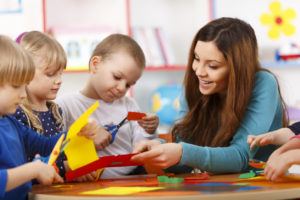
It’s is important to use the correct language to complement a child’s work. Phrases like “what is it?” or “I like your dog” may decreased self- confidence. If the child believes the creation is obvious to the observer (house, etc.) or if the final product is a cat instead of a dog, it is likely the child’s self-confidence will decrease. Asking open-ended statements or questions such as “You worked very hard!” or “Tell me about what you made!” will help boost self-confidence and social skills.
Before throwing away the paper towel roll, save it for your child’s next creative project!
Take a look at our developmental checklist at http://checklist.abcpediatrictherapy.com to see what fine motor to challenge in your child and when.
Visit our website at https://www.abcpediatrictherapy.com to answer any questions about your child’s development you might have.
Read MoreWhat is it?
A tool to help parents know what their child should be doing and when. 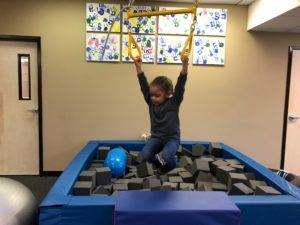
How does it work?
It is simple. Simply plug in your child’s birthdate. The gross motor, fine motor, language and sensory tasks that your child should do at that age will pop up. Answer the questions indicating what your child can and cannot do.
After submitting the tool, you will receive an email with tips and tricks on how to help your child at home. You also receive a FREE developmental checklist of all the skills a child should do between the ages of 1 and 6 years old.
Practice these age appropriate skills with your child. We hope you have success challenging them!
Let us know if we can help you.
Why did ABC Pediatric Therapy develop this tool?
ABC found that many parents do not know what to encourage and when. We want to help! This tool will teach you what toys to have and what skills to challenge at what age. Educate yourself! Be the best parent you can be! Challenge your child’s skills!
Who would find this tool useful?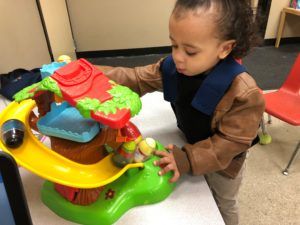
Any parent of a child under the age of 6 years old.
You can find this Interactive Screening Tool at checklist.abcpediatrictherapy.com. We hope you find it useful!
Visit our website at https://www.abcpediatrictherapy.com for more information on child development.
Read More
The holidays are just around the corner and family and friends will be wondering what to get your child this year. With hours spent at school, popular video games and TV shows, children are sitting more and more. This year consider some of the following ideas to get your child moving and help support their development!
Gift ideas for Elementary aged children:
-kinetic sand or sand box with shovel and bucket
-make your own sensory bins: fill containers with beans, rice, water beads, etc and hide holiday items inside for your child to find
-Print your own Christmas songs with movement book such as this one from: https://www.fantasticfunandlearning.com/christmas-songs.html
-cookie/gingerbread decorating kit
-Puzzles
-velcro dart board
-bean bags – great for a variety of games such as a child sized corn hole game or large-scale tic tac toe
-social skills board game
-fine motor tools kit
-Bike
-building sets such as lego or playmobile
-swing set or single swing that can be used indoors
-playground set
-toys with latches and keys
-chalkboard/dry erase board with writing tools and magnets
-art supplies
– lacing kits
-sports kits (goal with soccer ball, t-ball set, golf set, hockey sticks and net, basketball hoop, etc)
-get creative with obstacle courses to get your child up and moving: you can wrap your own kit with balance discs or domes, hurdles, tunnels, etc. You can also use household items such as cushions and steps to set up during play time. Doing a puzzle by crossing the obstacle course to place it in, is a fun way to make your gifts even more interactive
-put a holiday spin on household favorites. For example, if your child loves playdough, you can make your own candy cane dough, put tinsel/sparkles inside of the dough, or make your own slime!
If you have questions about your child’s development, visit our website at https://www.abcpediatrictherapy.com
Read MoreComing up to the holiday season, many parents have questions about the best toys for their toddlers. Our day to day routines have evolved to promote children spending time in “containers.” This can be sitting in a car seat, jumpers, activity chairs, long periods in high chairs, etc. While convenient and necessary, it is also important to encourage your child to have plenty of breaks from these devices and get them moving around and playing with toys that stimulate different body systems. This holiday season, consider some of the following ideas to help promote your toddler’s development:
- Wooden blocks/mega blocks
- Connecting toys such as pop beads
- Stacking peg board

- Stacking rings
- Activity tables to promote standing and cruising
- Bubbles

- Make your own sensory bins; fill different containers with beans, rice, cereal, water beads, etc and hide holiday objects to find inside
- You can make your own Candy Cane cloud dough for a themed option. Recipe here: http://www.growingajeweledrose.com/2012/12/candy-cane-clouds-sensory-activity.html
- Playground ball, soccer ball, basketball, etc.
- Art station
- You can set up a station to play with puff paint or shaving cream and “draw” with fingers; this idea works great on a mirror or flat, easy to clean table surface
- Non-toxic art supplies
- Palm grip crayons
- Large chalk

- you can make your own chalkboard table by painting an existing small table with chalkboard paint
- Easel
- Sand box with pail and shovel
- Dress up box
- Board books
- Simple jigsaw puzzles
- Musical instruments – you can look for toy versions that pair light and sound when playing the instrument
Remember not all games/toys have to be costly or expensive! Time and time again, parents say their children love playing with household items. Get creative by putting a holiday spin on toys and games your children love. Feel free to share your ideas with other parents on our facebook page….
If you have questions about your child’s development, please call us at 513-755-6600 or visit our website at https://www.abcpediatrictherapy.com
Read MoreAfter reading Prewriting Tips to Grow On and working on these skills with your child, you should be on the right track to begin handwriting letters and numbers with your child.
1. By 5, your child should begin writing numbers 1-5 and capital letters of his/her first name.
At first, give your child opportunities to trace the capital letters of his/her first name. Once they have mastered this and stay on the lines, they are able to begin writing the letters with a visual model. Focus on learning the appropriate formation of each letter, beginning all letters at the top rather than the bottom. Learning how to form letters correctly from the beginning helps them succeed later. Once your child’s formation of letters is appropriate, work on writing letters independently, without a visual model. When your child learns to write his/her name, s/he is ready to learn the rest of the alphabet.
2. By 5.5, your child should be able to write numbers 1-10 and all capital letters.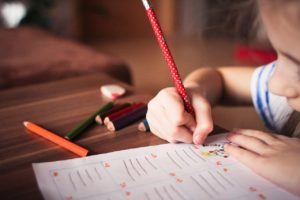
Start with capital letters A-M. Begin tracing, then writing with a visual model, and move onto writing independently. Then focus on N-Z following the same sequence. Lastly, put it all together, writing letters A-Z independently.
3. By around 6.5, your child should be able to write all lower case letters.
Follow the same sequence with lower case letters as you did with upper case letters. Lower case letters can also be divided into 3 different categories (tall, diver, and other letters) to teach.
Tall letters: b, d, f, h, k, l, t
Diver letters: g, j, p, q, y
If your child is having difficulty with letter formation, try making starting dots so your child knows where to begin each letter. Also writing in different mediums such as finger paint, sand, shaving cream, playdoh, chalk, and dry erase markers can help children learn how to form letters. Writing in different tactile mediums has been proven to help children learn to write.
After your child has mastered forming capital and lower case letters, it is now time to work on line alignment and sizing. Using horizontal three lined paper (ADD picture) with bold/colored top and bottom lines can assist with line alignment and sizing. Additionally, highlighting these boarders can help. Highlighting the space below the dotted line can help with alignment of lower case letters.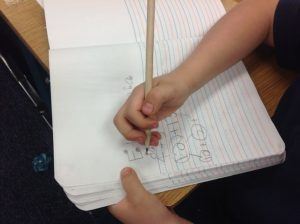
It is now time to move onto writing words and sentences. Make sure letters stay formed and aligned correctly when completing these tasks; sometimes when children begin to write words their formation and alignment decrease. You will now also have to focus on spacing letters within words and spacing between words. The best way to space between words is to use your child’s finger as a space marker.
Again, if you are having concerns or if you child is not progressing like you think s/he should, please do not hesitate to contact ABC Pediatric Therapy and specifically ask for an occupational therapist for more ideas geared towards your specific needs and if you have any additional questions or would like a free screening. Visit our website at www.abcpediatrictherapy.com to find the location nearest you.
Read More1. By a young age, encourage your child to color and explore using paper and crayons as this is an integral part of your child’s prewriting and fine motor development. Continue working on purposeful scribbling, coloring in large/small shapes, drawing (specifically people), and using your child’s creativity throughout his/her childhood.
2. By 2 years old, your child should begin grasping writing utensils in palm and imitating vertical lines.
3. By 2.5 years old, your child should be able to grasp a pencil with thumb and fingers instead of a fist and begin drawing horizontal lines.
4. By 3 years old, your child should begin drawing circles stopping within ½” of the endpoint and making crosses (+).
5. By 3.5 years old, your child should begin drawing X’s.
6. By 4 years of age, your child should begin having a static tripod grasp (grasp using 3 fingers but limited movement within fingers/wrist).
7. By 4.5 years of age, your child should begin to draw squares.
8. By 5, your child should begin drawing triangles and writing numbers 1-5 and capital letters of his/her first name.
9. By 5.5, your child should be able to write numbers 1-10 and all capital letters.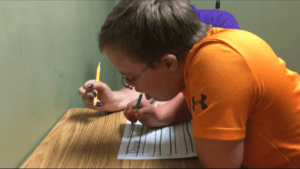
10. By around 6.5, your child should be able to write all lower case letters and have developed a dynamic tripod functional grasp.
If by 4, your child is demonstrating difficulty with holding a writing utensil (pencil, crayons, markers) with 3 fingers and maintaining a functional grasp, it is beneficial to use broken crayon pieces or color/write on a vertical surface as these two activities encourage use of a functional grasp.
Additionally, if your child is still demonstrating difficulty, there are hand strengthening activities you can complete to work on strengthening the specific muscles needed to hold/maintain a functional grasp:
1. Use tweezers to pick up small objects
2. Play with playdoh
3. Use thera-putty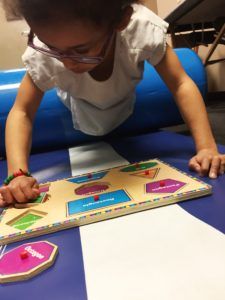
4. Engage with interlocking construction toys such as tinker toys or bristle blocks
5. Encourage water play with spray bottles, water guns, squirt toys, sponges, etc.
6. Clothes pin games
7. Hole punch activities
8. Squeeze toys and activities such as using glue
9. Weight bearing activities such as completing activities in prone (on stomach), wheelbarrow walking, animal walks, etc.
**Pencil grips should be used a last resort when teaching a child to hold a writing utensil as this hinders the development of functional grasp.
If you are having concerns or if you child is not progressing like you think s/he should, please do not hesitate to contact ABC Pediatric Therapy and specifically ask for an occupational therapist for more ideas geared towards your specific needs and if you have any additional questions or would like a free screening. Visit our website at www.abcpediatrictherapy.com to find the location nearest you.
Read MoreFall tree cutting activity:
- Cut a tree trunk and branches (different sizes of rectangles) out of brown construction paper and glue it onto another piece of construction paper (you can use blue for the sky or any other color you choose)
- Cut a strip of green paper and glue it under to bottom of the tree for grass
- Cut out strips of red, orange, and yellow paper
- Cut the strips into small squares for the leaves of the tree
- Scrunch the square pieces and glue them on the branches, the grass and the paper as leaves falling from the tree
Hang it up on the refrigerator or around the house for fall decoration!

 Skip to content
Skip to content
